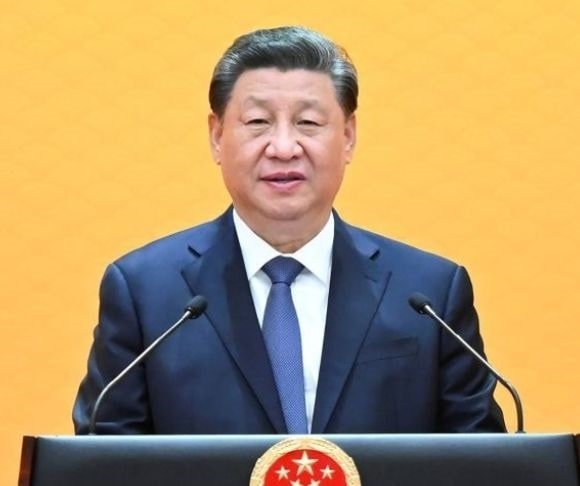Tensions between China and its neighbors show no signs of easing. On the contrary, for both Taiwan and Japan the Beijing threat looms large on the horizon. Consequently, it should be no surprise to People’s Republic of China’s (PRC) President Xi Jinping that the Tokyo and Taipei governments are preparing to counter any overt military provocation by the Chinese Communist Party. The Taiwan government has indicated it will implement one-year conscription for military-age men. Japan, for its part, has substantially increased defense spending and adopted a more proactive defense strategy.
 The heightened emphasis on countering Beijing’s belligerence in the region has been brought on by the nearly year-long rise in the People’s Liberation Army’s (PLA) threatening maneuvers against Taiwan and Japan. “The swarm (71) of Chinese fighter jets, maritime patrol planes, and drones that buzzed the airspace near Taiwan in the 24-hour period leading to Monday (December 26) morning demonstrated Beijing’s appetite for confrontation with the United States over Taiwan, the island democracy China claims as its territory,” Amy Chang Chien and Chang Che reported in The New York Times. Moreover, recent reports on China’s and Russia’s week-long, live-fire maritime exercises in waters close to Japan are raising concern among Indo-Pacific allies and the United States.
The heightened emphasis on countering Beijing’s belligerence in the region has been brought on by the nearly year-long rise in the People’s Liberation Army’s (PLA) threatening maneuvers against Taiwan and Japan. “The swarm (71) of Chinese fighter jets, maritime patrol planes, and drones that buzzed the airspace near Taiwan in the 24-hour period leading to Monday (December 26) morning demonstrated Beijing’s appetite for confrontation with the United States over Taiwan, the island democracy China claims as its territory,” Amy Chang Chien and Chang Che reported in The New York Times. Moreover, recent reports on China’s and Russia’s week-long, live-fire maritime exercises in waters close to Japan are raising concern among Indo-Pacific allies and the United States.
Japan Increases Defense Spending
In a more overt and public way, on Dec. 16, Japan announced its new National Security Strategy, National Defense Strategy, and Defense Buildup Program. The US State Department expressed its support for the Tokyo government’s sharpened focus on the threats in the region with a press statement:
“We applaud Japan’s commitment to modernize our Alliance through increased investment in enhanced roles, missions, and capabilities and closer defense cooperation with the United States and other Allies and partners, as outlined in these new documents. Japan’s strategy converges with our own in recognizing that closer linkages among likeminded nations are paramount to protect shared interests and values and address shared challenges.”
Underpinning Japan’s Defense Buildup Plan is an unprecedented surge in defense spending and emphasis on longer reach weapons, moving away from a “defense only” posture. On Dec. 23, the Japanese government approved the largest gain in its budget for weapons, enabling Japan to be a more formidable ally in the region. “The increase is necessary, the budget states, to cope with new threats surrounding Japan, such as China’s attempt to unilaterally change the regional balance of power by force,” Stars and Stripes reporter Hana Kusumoto wrote.
The new funding is a 26% rise in capability investment, including $1.6 billion for stand-off Tomahawk missiles deployed on Japanese Aegis radar-equipped destroyers. Additionally, “To reinforce strike capability and range, Japan is adding eight more F-35Bs at 143.5 billion yen ($1.08 billion) capable of short takeoffs and vertical landing on either of the two formerly helicopter carriers Izumo and Kaga,” the Associated Press reported.
Taiwan Moves to Increase Military Force

Tsai Ing-wen (Photo by Walid Berrazeg/SOPA Images/LightRocket via Getty Images)
Taiwan has made clear it is taking steps to fortify its regular military forces. Reporting from the island nation confirms Taiwan’s President Tsai Ing-wen plans to order the current military draft program for military-age men extended four months to one year. Tsai is expected to sign an executive order boosting the length of conscription going into effect on Jan. 1, 2023. “A decline in population and the rising threat posed by China [mean] Taiwan must fall back on conscription to have the necessary number of troops to defend itself,” the Taipei Times wrote, citing an internal Ministry of Defense report.
The United States is backing Taiwan with expanded military support as the PRC’s hostile military operations have become more frequent. Included in the FY2023 National Defense Authorization Act (NDAA) is authorizing language for the Taiwan Enhanced Resiliency Act, providing for $10 billion in Foreign Military Financing grants. As significant, the NDAA makes Taiwan “eligible for a regional contingency stockpile program to ensure important supplies are on the island in advance of major Chinese aggression.”
Beijing’s persistent, aggressive, and dangerous activities in the East China Sea near Japan and the Straits of Taiwan have prompted actions to defend the Taipei government and the security interests of Japan. Congress has moved in the right direction to build US investment in the Indo-Pacific. And Japan and Taiwan have taken decisive and prudent actions to help ensure the safety of their people.
The views expressed are those of the author and not of any other affiliation.




